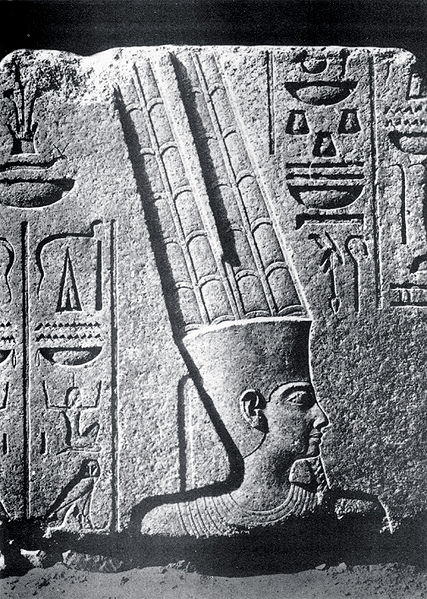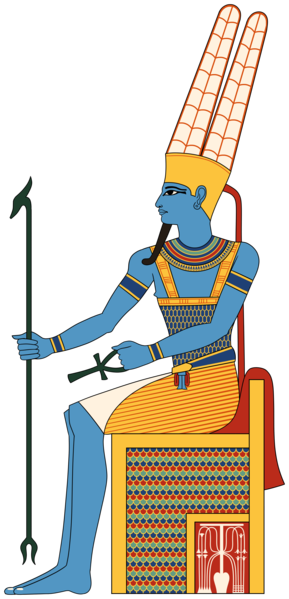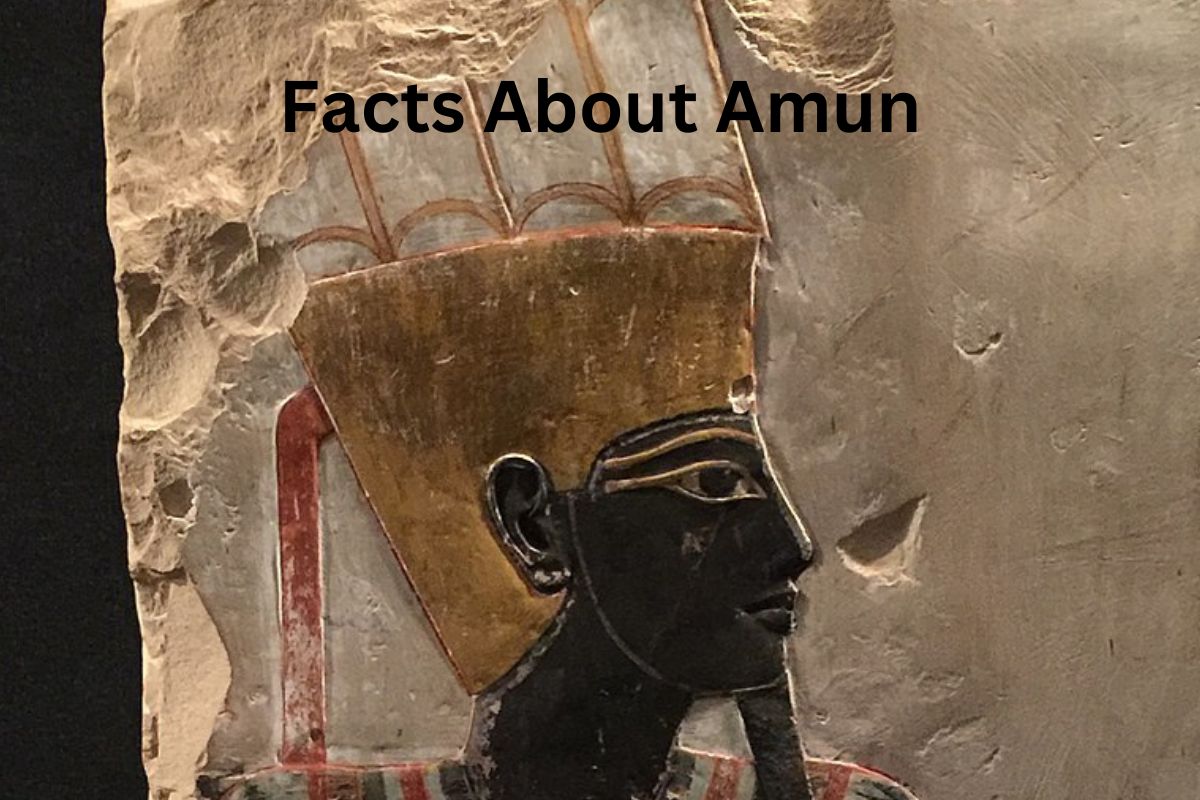Amun, an Egyptian god of great significance, held a prominent place in ancient Egyptian mythology and religion. Associated with the air and wind, Amun’s name means “hidden” or “invisible.”
Worshiped primarily in Thebes during the New Kingdom period, he became the patron deity and the head of the Egyptian pantheon. Amun was often depicted as a man wearing a tall, plumed crown, symbolizing his authority, and was closely associated with creation and the sun as Amun-Ra.
With his temples and the influence of his priests, Amun’s cult wielded substantial political power in ancient Egypt. While his worship declined after the fall of ancient Egypt, Amun’s legacy and impact on Egyptian culture and religion remain significant.
Amun Egyptian God Facts
1. Amun was one of the most significant gods in ancient Egyptian mythology
Amun held a prominent place in ancient Egyptian mythology and religion. He was considered a major deity, and his worship spanned several centuries.
The name “Amun” is derived from the ancient Egyptian word “imn,” which means “hidden” or “invisible.” This name reflects the perception that Amun was a mysterious and elusive god, often associated with the unseen forces of the air and wind.

2. Amun was primarily worshiped in Thebes
Amun’s cult gained prominence in the city of Thebes (modern-day Luxor), which was the capital of ancient Egypt during the New Kingdom period.
Also Read: Facts About Egyptian Gods
Over time, Amun became the patron deity of Thebes and rose to become the head of the Egyptian pantheon, displacing other gods like Ptah and Re. Thebes became the center of Amun’s worship, and numerous temples were constructed there in his honor.
3. Amun was often depicted as a man wearing a tall, plumed crown, symbolizing his authority and divinity
In art and iconography, Amun was typically portrayed as a man with a human body and a tall, plumed crown known as the atef crown. The atef crown represented his authority and divinity.
Sometimes, Amun was depicted with blue skin, symbolizing his association with the air and the heavens. He was often shown standing or seated on a throne, holding a scepter in one hand, and an ankh, the symbol of life, in the other. These depictions emphasized his role as a powerful and influential deity.
4. Amun was believed to be the creator god and the source of all life
Amun was closely associated with creation and was often referred to as a creator god. He was believed to be the source of all life and the one who breathed life into the world. During the New Kingdom, Amun was frequently merged with the sun god Ra to form Amun-Ra.
This amalgamation represented the combination of Amun’s creative powers with Ra’s role as the sun god, symbolizing the sun as the life-giving force. As Amun-Ra, he was considered the supreme deity and the king of the gods.
5. Amun was also considered the king of the gods and the ruler of the universe
Amun held a position of great authority in the Egyptian pantheon. He was revered as the king of the gods, and his influence extended over the entire universe. Amun’s authority was often portrayed through his association with kingship symbols, such as the scepter and the ankh.
His depiction sitting on a throne emphasized his role as a divine ruler, overseeing the cosmos and all its inhabitants.

6. The power and influence of Amun increased during the reign of pharaohs of the New Kingdom
During the New Kingdom, particularly under pharaohs like Amenhotep III and Ramesses II, grand temples dedicated to Amun were constructed. The most significant of these was the sprawling complex at Karnak in Thebes, which served as the primary center of Amun’s worship.
These temples were built on a massive scale and adorned with intricate carvings and paintings. The priests of Amun held immense political power and amassed great wealth. They played a vital role in the administration of the temples, managing vast resources, and conducting rituals on behalf of the god.
The high priest of Amun, known as the “First Prophet of Amun,” was considered one of the most influential figures in society, often wielding considerable influence over the pharaoh and state affairs. The priests’ status and influence further bolstered the prominence of Amun’s cult in ancient Egypt.
7. The priests of Amun held significant political power in ancient Egypt
The priests of Amun held significant political power in ancient Egypt. Due to the vast resources and wealth associated with Amun’s temples, the priesthood became highly influential. The priests managed extensive land holdings, agricultural estates, and financial assets.
They played a crucial role in the economy by controlling trade and production, further enhancing their political influence. The high priest of Amun, as the chief religious authority, often had a close relationship with the pharaoh, advising and guiding them on religious matters.
This connection gave the priests considerable sway over the ruling class and allowed them to shape policies and exert influence in both religious and political spheres.
8. Amun was associated with fertility and was often invoked by couples seeking to have children
Amun was also associated with fertility and was often invoked by couples seeking to have children. He was believed to have the power to grant fertility and aid in conception.
Worshipers would visit Amun’s temples and offer prayers and offerings to seek his blessings for fertility and a healthy family.
Amun’s role in fertility further solidified his significance in the lives of ancient Egyptians, as the desire for children and a prosperous family was of great importance in their society.
9. Amun’s cult extended beyond Egypt’s borders, particularly during the period of the New Kingdom
During the New Kingdom period, as Egypt expanded its territory and influence, the worship of Amun extended beyond the borders of Egypt. Through military campaigns and diplomatic relationships, the cult of Amun reached regions like Nubia and Kush.
Temples dedicated to Amun were built in these conquered territories, solidifying his presence and influence. As a result, Amun’s worship and mythology spread beyond Egypt, leaving a lasting impact on the religious beliefs and practices of neighboring cultures.
10. After the decline of ancient Egypt, Amun’s worship waned, and he gradually merged with other deities
With the decline of ancient Egypt, the worship of Amun gradually waned. The rise of foreign powers, such as the Persians and later the Greeks under Alexander the Great, brought changes to Egyptian religion.
Amun’s cult merged with other deities, such as the Greek god Zeus, during the Ptolemaic period. With the advent of Christianity in the region, the worship of ancient Egyptian gods, including Amun, eventually ceased altogether.
Nevertheless, Amun’s legacy remains significant, and his influence on ancient Egyptian culture, religious beliefs, and art cannot be overlooked. The ruins of temples dedicated to Amun, such as the Karnak Temple in Thebes, stand as a testament to the former grandeur and power associated with this revered deity.
